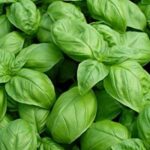Introduction
Raised bed gardening is a great way to enjoy your own homegrown vegetables and flowers. With the right soil, water, and sunlight, you can have an enjoyable garden that is easier to maintain than traditional gardens. There are many different types of woods available for raised bed gardening, so it’s important to do your research and find what works best for you. Generally, redwood or cedar are thought to be good choices as they last longer than other types of wood without rotting or splintering over time. They also provide natural protection against pests and weeds. Pressure-treated lumber may be used as an economical alternative but should not come into contact with food plants because the chemicals used in its treatment may be toxic. This type of wood can still be used for the frame and structure of the raised bed though. Other material options include stone or brick if desired; these materials offer long-term durability but may be more expensive than wood initially. Ultimately, with a little knowledge about what works best for your garden environment, it is possible to choose the right material for your raised bed garden project!
Pros and Cons of Different Woods for Raised Beds
Cedar: Cedar is one of the most popularly used woods forRaised beds. It is very resistant to decay and insect infestations, and often lasts for decades without needing to be replaced. One disadvantage to using cedar is its cost. Cedar can be expensive compared to otherwoods, making it a less affordable option for some.
Redwood: Redwood has natural oils which make it resistant to rot and decay, making it an excellent choice for raised gardens. The wood is also lightweight, so it’s easy to move and modify if necessary. On the downside, redwood can be expensive and may need to be replaced more frequently than other woods due to its higher tendency to warp over time.
Pine: Pine can require more upkeep in order to prevent it from rotting, but provides a strong foundation for raised beds that can last several years with proper care. A benefit of pine is that it’s relatively inexpensive compared to cedar or redwood, making it a good budget-friendly option for those on a tight budget.
Pressure-Treated Lumber: Pressure-treated lumber doesn’t require much maintenance, stands up well against rot and pests, and lasts longer than untreated wood when exposedto the elements. A downside of pressure-treated lumber is that chemical preservatives used in treatment have been linked to potentially adverse health risks when inhaled directly or skin contact occurs – so protective clothing should always be worn when constructing a raised bed with this type of wood.
Brief Overview of Pressure Treated Lumber
Pressure treated lumber is an ideal choice for raised bed gardening. It is a durable material that is resistant to rot, insects, moisture, and other environmental factors. Pressure treated lumber is also easy to work with and comes in many different sizes, allowing gardeners to customize their raised beds to the shape they need. The material is also relatively inexpensive, making it a cost-effective solution for those looking to construct a raised garden bed. When purchasing pressure-treated lumber, it’s important to pay attention to labeling; make sure you are buying the right type of lumber that has been pressure treated with chemicals safe for use in garden beds. Additionally, once the wood has been installed, water it down thoroughly before planting in order to ensure that any residual chemicals have been washed off prior to adding your plants or vegetables.
In-depth Look at the Benefits of Cedar Wood
One of the best wood materials to use for raised bed gardening is cedar. Cedarwood is considered to be a great choice due to its natural toughness, strength and moisture resistance. Cedar’s high density and softness allows it to provide efficient insulation and protection from the elements, helping your plants grow better. The wood has a pleasant smell which can help ward off unwanted pests, giving your garden added protection. As well as these beneficial properties, cedar is easy to shape, making it perfect when building a DIY garden bed. Aside from being incredibly durable and biologically resistant to rot and insect damage, cedar is also an environmentally friendly product that’s widely available as sustainable sources like fallen trees or recycled materials have become popular resources for creating cedar furniture or garden beds. This means you can enjoy the many benefits of this excellent wooden material without any negative impact on nature!
Cedarwood gardens are also long-lasting due to their exceptional durability and strength, which makes them ideal for projects that require minimal maintenance over time. Any raised beds made from cedar will retain their good looks thanks to the protective properties of the wood’s natural oils which help keep your garden looking new for years!
Deeper Look at the Benefits of Redwood
Redwood is an excellent choice for raised bed gardening as it is naturally rot-resistant, so it won’t need to be treated with insecticides or fertilizer. The reddish-gold colour of the wood gives your garden a unique and classic look that’s hard to match. Redwood is also very durable and strong; this makes it resistant to cracking and splitting, allowing your garden to last for years with minimal maintenance. Redwood also offers great insulation when compared to other woods, meaning that temperatures in the soil will remain stable for longer periods of time. Lastly, redwood adds a natural beauty to your garden that you’ll appreciate over time – from its distinctive colour to its classic grain patterns. Redwood blocks harmful UV rays from destroying plants’ leaves, so even during long summer days, you don’t have to worry about wilting and burning foliage. Additionally, redwood is comfortably lightweight – making it much easier for one person carry pieces around during construction projects or repairs. If taken care of properly, redwood can last decades in raised bed gardens and continue providing all of these benefits along the way!
Pros and Cons of Using Pressure Treated Pine
Pressure treated pine is one of the most popular woods used for raised bed gardening. Its main advantage is that it is inexpensive and widely available. It also holds up well against moisture, insects and decay as it has been pressure treated with a chemical preservative that allows it to resist rot, mold and fungi.
The main disadvantage of using pressure treated pine is the potential health concerns associated with the preservatives used in its manufacture. These chemicals, such as chromated copper arsenate (CCA), may leach into soil and nearby plants over time. Furthermore, CCA-treated wood may contain small amounts of arsenic, which can be hazardous if ingested.
Additionally, because pressure-treated wood has been chemically treated to resist rotting, it could affect the nutrient balance in your soil. As a result, experienced gardeners advise that you use raised bed liners (such as organic fabric or landscape fabric) to keep your soil separate from any wood used in the construction of your raised beds.
In-depth Look at the Benefits of Cypress Wood
Cypress wood is one of the best wood choices for raised bed gardening. As a type of rot-resistant softwood, it has enough strength to handle the normal wear and tear that planters are subject to. Cypress is immensely popular among gardeners because it will last a long time, even in less than ideal conditions. It can also withstand occasional flooding or contact with insects or fungi while still adding classic beauty to any landscape.
When you opt for cypress wood for your raised bed gardening project, you’ll be getting a dense material that stands up well over time – even in wet climates. Cypress resists warping and splitting, known as checking; it’s naturally resistant against moisture and decay so it won’t decompose quickly even when exposed to rain and other elements. This durable wood also holds nails better than most other materials, making it easy to secure hardware into place if needed.
Another great feature of cypress is its attraction to termites; since these bugs aren’t attracted to this material, you can use cypress without needing extra pest control protections like pressure-treated woods require. You may be able to find such treated options available on the market though they’re not necessary when using cypress. In landfills too, the decay rate of this lumber tends to be much faster, which is beneficial for both environmental conservation and cost savings long-term.
Finally, homeowners can also reap aesthetic rewards when choosing cypress for their raised bed gardening projects as this beautiful darker shade of lumber easily blends into most landscapes while complementing natural foliage – an appealing visual contrast to many flower beds. Not only does it look nice when properly sealed but depending on how its cut or treated, you might even achieve unique results that stand out from afar yet look simultaneously tasteful up close too!
Visually Comparing Durable Hardwoods
When building a raised bed for gardening, it is important to choose the right type of wood. Hardwoods are the most popular choice for raised bed construction because they are durable, resistant to decay and insects, and look aesthetically appealing. Some common hardwoods used in outdoor projects like raised beds include: cedar, cypress, redwood, teak, ipe, mahogany and oak. Here’s a brief visual comparison of these durable hardwoods:
Cedar is renowned for its fragrance and natural decay-resistant properties. It features a golden hue with white-yellow undertones that can fade when exposed to direct sunlight over long periods of time. Cypress has similar durability and color as cedar but with orange-brown undertones. Redwood is very light in color and aromatic due to its high oil content; it also contains antifungal properties which makes it highly resistant against harsh temperatures and moisture changes. Teak provides a beautiful grained gold-brown tone but requires regular treatment with detergents or oil to maintain its finish. Ipe is fast becoming one of the most popular hardwoods for outdoor projects – it’s lightweight yet sturdy (similarly to redwood) and can last up to 50 years if properly maintained! Mahogany has an exquisite looking reddish-brown finish which makes it an attractive option for many customers; however, being expensive and prone to damage this material may not be suitable for raised beds found in climates where humidity levels are very high or sudden temperature shifts occur routinely throughout the seasons. Lastly, Oak is another strong choice due to its heavy weight capacity – it offers excellent weather resistance while providing your garden with rich brownish tones at an economical price point
Pros and Cons of Sustainably Sourced Wood
Sustainably sourced wood is an excellent choice for raised bed gardening, as it is environmentally friendly and also relatively affordable. One of the biggest advantages of using sustainably sourced wood is that it has been approved by forestry management bodies who monitor their use and work to ensure natural forests are not impacted in any way. Additionally, this type of wood is often available from local stores and farms, making it easy to get without having to buy overseas or through a large chain.
The main disadvantage of using sustainably sourced wood for raised bed gardening is its durability. Certain varieties, such as Cedar and Redwood, last longer than other woods and can handle harsher conditions. Other woods may not have the same level of durability, requiring more frequent replacement or extra protection from the elements. Finally, because sustainably sourced wood isn’t typically treated with chemicals or preservatives, it can be susceptible to rotting in wetter climates which could be harmful to plants if the bed gets too moist.
Summary and Final Recommendation
When it comes to choosing the best wood to use for raised bed gardening, there are several factors that need to be taken into consideration. Firstly, it is important to select a type of wood that has resistance against rotting, warping, and other elements of wear and tear. Cedar, redwood, and cypress are all popular choices for raised bed applications due to their naturally insect-resistant properties. It is also beneficial to avoid chemically treated lumber such as pressure-treated lumber for vegetables and fruits – these Woods have a higher risk of leaching chemicals into the soil.
Furthermore, depending on your specific location and climate conditions consider selecting a wood with good heat retention such as cedar or teakwood, or one with good cold protection such as mahogany or knotty pine. Depending on the size and construction style of your beds, you will also want to choose a species suitable for structural integrity such as oak or Douglas fir. Finally, make sure that whatever material you use is sourced from sustainable resources. FSC certified woods are always recommended over materials from non-sustainable sources like clearcutting forests for lumber production.
Given all these factors in mind the best wood for building raised garden beds are hardwoods such as redwood, cedar, Douglas fir or oak along with sustainably grown tropical hardwoods like teak and mahogany if desired. Not only will these resist insects but they also possess excellent strength while being eco-friendly options at the same time.
Conclusion
When deciding on the best wood to use for raised bed gardening, there are several factors to consider: cost, rot-resistance, toxicity and sturdiness. Cedar is one of the most popular and widely used woods for raised gardens, as it is rot-resistant and relatively keen in price. Additionally, cedar is resistant to pests such as termites or carpenter ants. However, cedar can be one of the more expensive options when compared with other softwood species. Pressure-treated lumber can also be an option; this type of wood has been infused with a preservative to protect it against rot, making it a great choice in climates where high humidity can cause rotting issues. This type of wood may contain toxins that can leach into the soil and water during heavy rainfall or watering however, so careful consideration should be taken before using it around food produce. Finally, hardwood varieties — such as white oak or black locust — are by far some of the longest lasting woods available for building a raised bed garden; though their cost point is quite high when compared to other types of wood materials. Ultimately when selecting the best option for long-term garden use it’s essential to determine your budget and select a type that adheres to those confines but also provides proper longevity in both appearance and functionality over time.

Welcome to my gardening blog! I am passionate about plants and enjoy sharing my knowledge and experiences with others. In this blog, I will write about everything related to gardening, from tips on how to get started to updates on my own garden projects.





